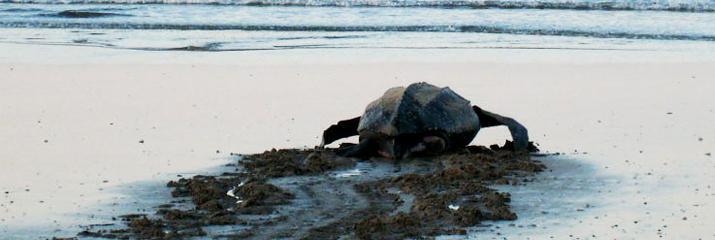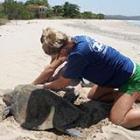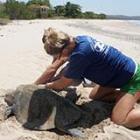Costa Rican Sea Turtles

-
About
The leatherback sea turtle population in the Pacific, once the stronghold of the species, has declined by over 90% since 1980.
Many of the remaining Pacific leatherbacks nest in the sands of Playa Grande, Playa Ventanas, and Playa Langosta on the Pacific coast of Costa Rica. Female leatherbacks dig holes with their flippers and lay about 80 round eggs, a process they’ll repeat up to 12 times during the breeding season. In about two months, the fragile hatchlings will emerge.
The world is a dangerous place for these tiny turtles and their parents. They’re threatened by climate change, boat traffic, fishing gear, and humans harvesting their eggs. To truly understand why this ancient species has declined so rapidly and what we can do to stop this decline, researchers need to know everything about them: their behavior, physiology, genetics, population biology, and migration patterns.
Help us protect these amazing creatures and lend a hand in building a better safer future for them.
SHARE THIS PAGE
Members
of this Expedition
Fundraised
in Program Contributions
Costa Rica, Costa Rica
October 2014 Costa Rican Sea Turtles Expedition

of $25,750.00
in donations needed to reach the Initiative Goal
Thank you for your support!
of 10
volunteers needed to reach the Initiative Goal


